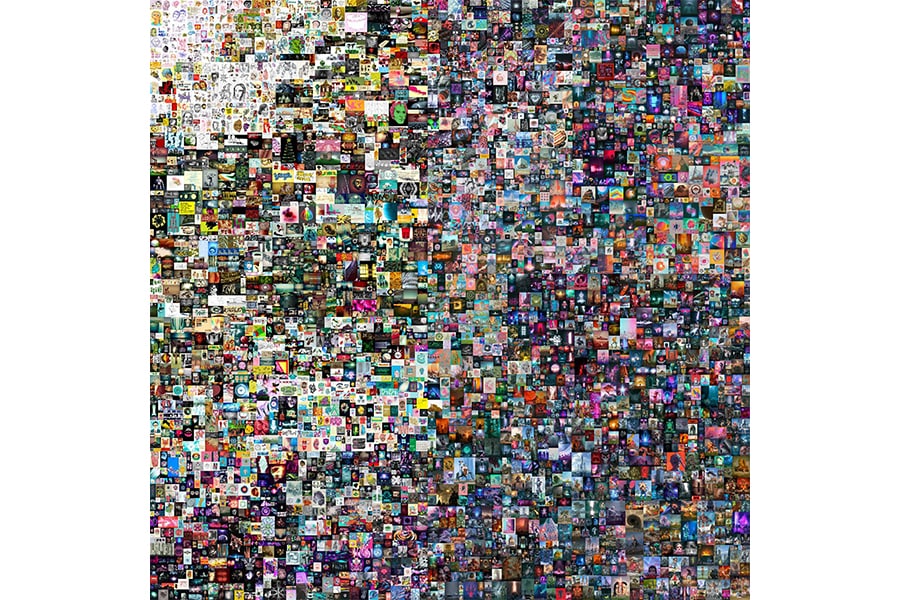
What are NFTs, anyway? One just sold for $69 million
NFTs or "nonfungible tokens," have taken the art market by storm, making the leap from specialist websites to premier auction houses
 This undated handout image obtained March 10, 2021, courtesy of Christie's shows a digital art collage by Beeple, for sale in New York. - The digital collage by the American artist Beeple, also known as Mike Winkelmann a pioneer of the exploding virtual art market, sold for a record $69.3 million, Christie's announced on March 11, 2021. "Everydays: The First 5,000 Days" is now the most expensive NFT –non-fungible token, or collectible digital asset transformed using blockchain into something ownable – ever sold.
This undated handout image obtained March 10, 2021, courtesy of Christie's shows a digital art collage by Beeple, for sale in New York. - The digital collage by the American artist Beeple, also known as Mike Winkelmann a pioneer of the exploding virtual art market, sold for a record $69.3 million, Christie's announced on March 11, 2021. "Everydays: The First 5,000 Days" is now the most expensive NFT –non-fungible token, or collectible digital asset transformed using blockchain into something ownable – ever sold.
Image: AFP PHOTO /Christie's auction house/Handout
Artist Mike Winkelmann, also known as Beeple, has just sold an NFT at a record-breaking $69.3 million, the third-highest price achieved by a living artist. The sale, at Christie’s, for the purely digital work was the strongest indication yet that NFTs, or “nonfungible tokens,” have taken the art market by storm, making the leap from specialist websites to premier auction houses. Beeple, a newcomer to the fine-art world who first heard about NFTs five months ago, is the most high-profile artist to profit off the huge boom in sales of these much hyped but poorly understood commodities.
If you have heard about them and want to know what the fuss is about, here’s a primer.
What is a "nonfungible token," or NFT?
An NFT is an asset verified using blockchain technology, in which a network of computers records transactions and gives buyers proof of authenticity and ownership. The current boom is mostly for digital assets, including images, GIFs, songs or videos. Most importantly, NFTs make digital artworks unique, and therefore sellable.
Now, artists, musicians, influencers and sports franchises are using NFTs to monetize digital goods that have previously been cheap or free. The technology also responds to the art world’s need for authentication and provenance in an increasingly digital world, permanently linking a digital file to its creator.
©2019 New York Times News Service




